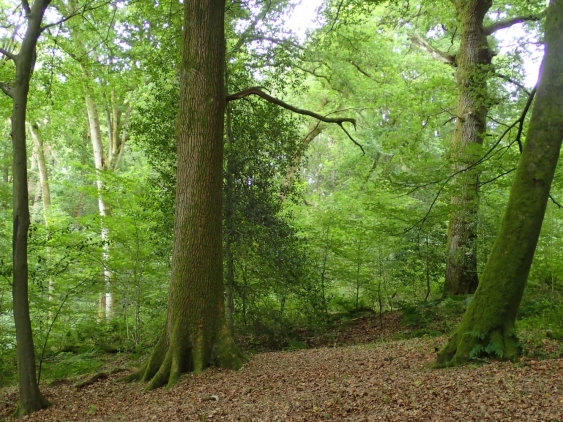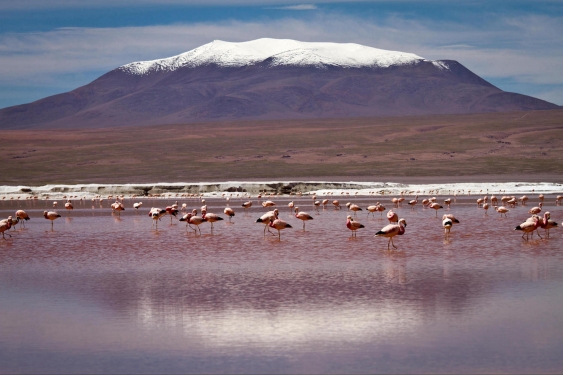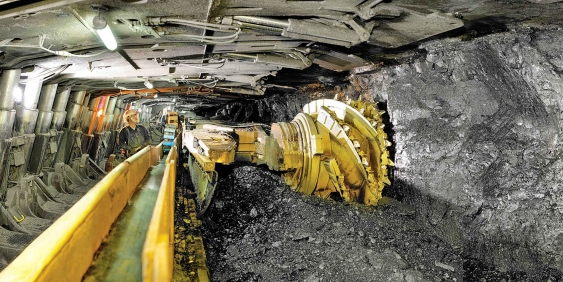The entire planet's ecosystems classified for the first time: study
The common platform heralds a new era of global conservation and management policy applications.
The common platform heralds a new era of global conservation and management policy applications.

A global cross-disciplinary team of scientists led by UNSW Sydney researchers has developed the first comprehensive classification of the world’s ecosystems across land, rivers and wetlands, and seas. The ecosystem typology will enable more coordinated and effective biodiversity conservation, critical for human wellbeing.
The extensive collaboration includes the International Union for Conservation of Nature (IUCN), which comprises about 1400 member organisations, including countries; the IUCN Commission on Ecosystem Management; the PLuS Alliance – Arizona State University, King’s College London and UNSW Sydney; and more than 100 specialist ecosystem scientists around the world.
The study, published today in Nature, explores the science that underpins the typology, as well as how it can help achieve objectives in global policy that flow to individual countries. With UNSW’s support, IUCN launched the first public version of the typology in 2020 and, since then, the researchers have refined and updated it.
An ecosystem, or ‘ecological system’, is a concept for describing nature in a particular area – all its living and physical components, their interactions and dependencies. Plants and animals depend on the physical environment to get the resources they need and to cope with disturbances like bushfires, floods, etc. Humans are part of ecosystems and we depend on the other components, so we want to make sure they keep working well and we have knowledge to be able to influence their ongoing function.
The research team was led by Professor David Keith, with Professor Richard Kingsford from UNSW’s Centre for Ecosystem Science and Professor Emily Nicholson from Deakin University.
“For the first time, we have a common platform that identifies, defines and describes the full suite of the whole planet’s ecosystems,” said Professor Keith.
“It may seem rather odd that we haven’t had this before, but historically scientists have forged advances by working somewhat separately in marine, freshwater and terrestrial ecosystems. This is the first time that all of this detailed knowledge has been brought together into a single framework taking advantage of common theory across the disciplines.”
Read more: Global catalogue of ecosystems launched to enable coordinated conservation efforts
The typology allows us to understand broad global patterns, including the transformation of ecosystems by people. Ten per cent of ecosystems are artificially created and maintained by humans but occupy more than 30 per cent of the Earth’s land surface – what is left is home to 94 per cent of threatened species on the IUCN Red List.
At a policy level, this is the first time we've had this kind of overview, Professor Kingsford said.
“It’s very hard to see the big picture on a jigsaw puzzle until you have all the pieces in place – and that's what we now have. We have a much more substantial foundation to move ahead with a new era of ecosystem conservation and management policy.”

The Temperate-boreal forests and woodlands biome includes moderate to highly productive tree-dominated systems. Photo: David Keith.
At a more general level, the overview allows policymakers and industry to plan their initiatives in full context. For governments and non-government organisations (NGOs) working in a range of countries, the overview can inform decisions about how ecosystem protection and restoration efforts can achieve maximum conservation benefit, and where development infrastructure is best placed to minimise impact.
A biome is a group of related ecosystems that share major physical processes. For example, all of the tropical forests are a biome even though in Australia they might be quite different to those in Africa – they share very few species. But they do share a way of operating and have similar parts, like a dense canopy of trees and vines – characteristics which aren’t shared by most other types of forests, which belong to different forest biomes.
“Efforts on biodiversity conservation have largely centred at the species level, because it's seen to be more tangible,” said Professor Keith. “But a broader focus on both ecosystems and species is more likely to succeed in conserving all plants and animals, as well as the essential services that nature provides people.”
Globally, countries coordinate their efforts under the umbrella of the United Nations Convention on Biological Diversity (CBD), which is coming up for renewal at the end of 2022. Delegates from 193 countries will meet in December at the 15th Conference of Parties in Montreal, Canada, to agree on the post-2020 agenda for CBD. Preparations for that meeting indicate a stronger emphasis on ecosystem conservation and management in the coming decades.
“The global ecosystem typology will make it possible to account for ongoing ecosystem change, identify threatened ecosystem types, and plan better preventative action and restoration under a renewed agenda for the CBD,” said Professor Nicholson.

The Lakes biome includes lentic ecosystems defined by their still waters. Photo: Sylvain Didier/Alamy.
This typology marks a breakthrough for sustainable management of the world’s ecosystems, said Dr Angela Andrade, Chair of IUCN’s Commission on Ecosystem Management and one of the authors.
”It will enable real progress on United Nations Sustainable Development Goals and Environmental Accounting, and should help place ecosystems at the forefront of the United Nations’ post-2020 agenda for conserving biological diversity.”
To make that a reality, we need a full set of high quality maps for all major ecosystem types, Professor Keith said.
“We are already well down that path, but we need help to surmount the considerable challenges by exploiting recent advances in computer and satellite technology, along with global networks of citizen scientists.”

The Anthropogenic subterranean voids biome includes a single functional group of ecosystems that owe their genesis to excavation by humans. Photo: Peabody Energy/ Wikimedia Commons.
Ecosystems provide homes and vital life support for all plants and animals, and supply essential ecosystem services that sustain business, culture and human wellbeing. Those services – such as provision of clean air and water, carbon sequestration, reduced risks of disasters and outdoor recreational opportunities that sustain mental health – are sometimes regarded as free, but ecosystem degradation incurs costs for tapping alternative resources, disaster relief and reconstruction, and to health budgets.
All of the world’s ecosystems show hallmarks of human influence, and many are under acute risk of collapse, with consequences for habitats of species, genetic diversity, ecosystem services, sustainable development and human wellbeing.
An ecosystem functional group is a level of organisation within biomes. For example, within the tropical forest biome, there are four functional groups that operate somewhat differently. Some tropical forests occur in continually wet landscapes on the lowlands, where it's very hot and humid. Another group is 'dry tropical forests' which have very seasonal climates, and they can dry out for months of the year. The montane tropical forests occupy more elevated mountain landscapes and depend a lot on mists.
The global ecosystem typology describes the diversity of tropical forests, big rivers, coral reefs and other ecosystems that have typically been the focus of public attention. But it also includes little-known ecosystems of deep ocean trenches, seamounts, lakes beneath the ice sheets and microscopic ecosystems within rocks.
“We don't think often about what's in the deep oceans, for example,” said Professor Keith. “There's a tremendous variety of life down there and it's organised into a number of different ecosystems. And those ecosystems are beginning to feel the impact of human expansion.
“The deep trenches in the ocean are filling up with microplastics, and we're starting to look at mining volcanic vents for minerals. We need to make decisions about those kinds of environments, just as we do about coral reefs and rainforests.”
The new typology has a hierarchical structure with six levels. The top level divides the planet into major realms, including terrestrial, freshwater, marine and subterranean ecosystems. The second and third levels include 25 biomes and 110 ecosystem functional groups, based on the ecological processes that shape different ecosystems and the functions that their key components perform. These functional groups will frame blueprints for sustainable ecosystem management.
Read more: UNSW scientist wins international conservation award
The lower levels of the hierarchy are based on finer ecosystem features and enable the integration of existing national classifications. These national ecosystem classifications and maps benefit from detailed scientific observations and considerable investment over many years. They are critical to conservation because many countries have built their environmental governance and regulations around them, as well as their protected area networks. the new global typlogy integrates these national classifications, rather than attempting to replace them. For the first time, a globally agreed typology enables these many different national systems to be reconciled across national borders, while supporting their ongoing use in each country.
The next major frontier for improved ecosystem management is to establish global maps and monitoring, Professor Keith said.
“Although many of the world’s 110 ecosystem types are already served with high quality maps updatable with satellite technology, the data for some other types is still rudimentary.
“We can’t plan effectively where to protect ecosystems or how to manage them sustainably unless we have reliable maps for the full range of ecosystem types, and integrate them into decision-making and monitoring systems,” he said.